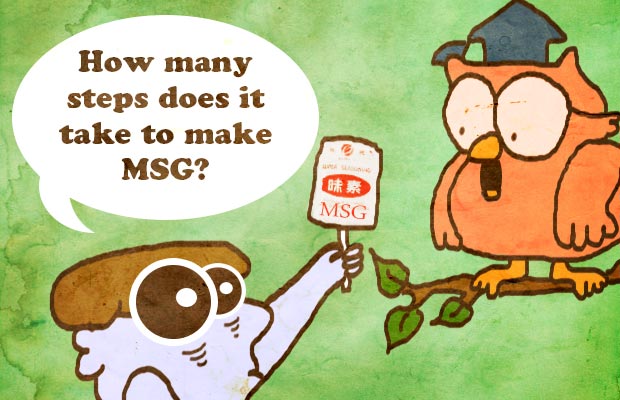If you're new here, you may want to subscribe to my RSS feed. Thanks for visiting!
By Aaron Dykes and Melissa Melton
Originally published at Truthstream Media
…because a natural food cooking process always involves treating genetically modified bacteria with penicillin, lye, a vat of acid, cryogenic freezing, silicon oil, and more lye…
Monosodium Glutamate (MSG) has become a very popular food additive over the past century, with Japanese scientists first isolating from seaweed for industrial purposes. The appeal, and danger, of MSG comes from the intense flavors of the free glutamate form of the non-essential amino acid, glutamic acid, which also delivers rapid stimulation to the brain and central nervous system when not in the bound form. These free glutamates have the tendency to overstimulate neurons to the point of cell death, while triggering an insulin response. More generally, MSG is used in food production to give cheap yet almost additive taste that arguably makes people crave more and more processed foods.
More recently, MSG has been produced indirectly by denaturing proteins through a highly chemical process to unleash the free glutamate content within. MSG produced this way does not have to be labeled as “monosodium glutamate” and can be recognized on labels by the informed under dozens of often deceptive names, just a few of which include: hydrolyzed protein, yeast extract, autolyzed yeast, textured protein, soy protein isolate, whey protein isolate, protease and gelatin (see more information at Truth in Labeling.org)
Details on the “Natural” MSG Extraction Process
According to Dr. Russell Blaylock, author of Excitoxins: The Taste That Kills, claims that substances labeled as ‘hydrolyzed vegetable protein’ et al. are perfectly ‘safe’ and ‘natural’ plant-derived foods deceptively ignore the reality of their processing methods. Blaylock calls them “junk vegetables” that are “selected so as to have naturally high contents of glutamate.” He describes the complex industrial extraction process this way:
“The extraction process of hydrolysis involves boiling these vegetables in a vat of acid. This is followed by a process of neutralization with caustic soda. The resulting product is a brown sludge that collects on the top. This is scraped off and allowed to dry. The end product is a brown powder that is in three known excitotoxins – glutamate, aspartate, and cystoic acid (which converts in the body to cysteine).”
Here’s a condensed version of the recipe for MSG production as we covered it in the video, from the Concise Encyclopedia of Bioresource Technology (2004):
MSG is the most commonly used flavor potentiator. Although it can be isolated from natural sources, such as wheat or corn gluten, fermentative production is more practical… Organisms belonging to the genera Corynebacterium, Brevibacterium, Microbacterium, and Arthrobacter can produce Lglutamic acid when grown on a variety of carbon sources… Sugar molasses is an economical feedstock, but requires treatment with penicillin or certain surface-active agents… nitrogen sources such as ammonium salts or urea… Microorganisms used… are usually preserved by lyophilization below –80°C… Foam is created by the CO2 that is generated… is taken care of by using biochemically inert silicon oil as an antifoaming agent… followed by adjustment of the pH to 3.2 with hydrochloric acid… crude crystals of L-glutamic acid are suspended in water and neutralized with sodium hydroxide… decolorized with activated charcoal to obtain a clear liquid that is further concentrated to crystallize MSG crystals. (FYI: Sodium hydroxide is otherwise known as caustic soda or lye.)
I guess the big rhetorical question is, are we all being chronically poisoned at the expense of industries who want us to eat/buy more crap food?















